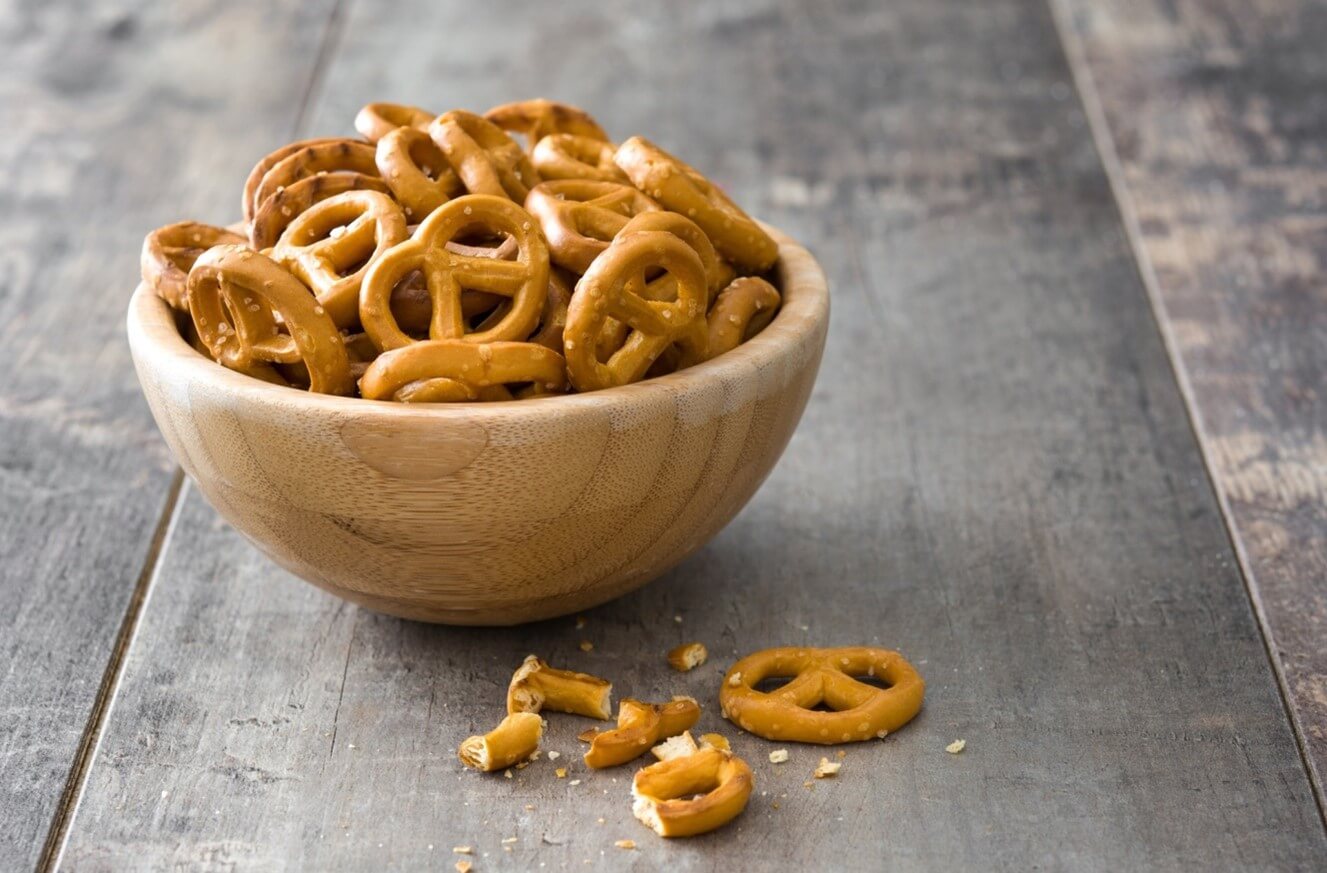Highlights:
- Protein and natural ingredients flag snacks as healthy.
- Diverse snacking occasions and needs are creating new opportunities.
- Indulgent formulations and formats boost the appeal of healthy snacks.

The snacking landscape continues to evolve as more consumers seek healthier choices. Check out the 2024 healthy snacking trends to learn consumers’ top reasons for snacking and what’s most important to them in a snack.
More consumers are looking for healthier snack alternatives. 60% of global consumers say they’ve become more aware of mindful snacking (up 4 percentage points from the prior year), while 61% report they always look for healthier alternatives of snacks (up 7 percentage points).1 When asked why they are choosing better-for-you snacks, the number one answer in North America, Latin America, Europe, and Asia is “healthier lifestyle.”2

As consumers’ priorities and snacking habits continue to evolve, brands that stay on top of these shifts will be well-positioned for success by delivering the most relevant snacks for today’s consumers. Here’s a look at the top 2024 healthy snacking trends brands should know:
In a snack, natural is closely aligned with healthfulness. No additives/preservatives (40%), no artificial ingredients (34%), and natural ingredients/clean label (33%) are the top attributes that make a healthy snack, according to consumers globally.3
Natural even comes in slightly ahead of nutritional claims. 30% of consumers say no/low/reduced claims (e.g., for fat, sugar, and salt) make a snack healthy to them, and 30% consider high in/source of claims (e.g., for protein, fiber, and vitamins) to be attributes that make a snack healthy.4 While nutrition is key to making a snack truly healthy, a natural ingredient list is a must-have to be perceived as healthy.
Another major trend is snacks high in protein. In the US, Europe, and Asia, consumers are having more protein snacks (such as bars, RTD shakes, and shakes from powder) compared to the year before.5 Among US consumers, the increased consumption of protein-fortified products rose across all age groups but was most prominent among 32-45-year-olds.6 Protein pancakes, breakfast cereals, and RTD shakes were favored by this group,7 underscoring the importance of protein for satiety and the morning meal.

Consumers have a positive health perception of snacks with protein compared to traditional snacks,8 which is supporting growth in these products. However, there is more opportunity for expansion. Our consumer research reveals the main barriers to expansion in protein bars, for example, are value, relevance, and taste.9 Even among regular protein snack users, “great tasting” is the most important attribute of a protein snack.10 Whey protein is the most preferred protein.11
Download our Protein Guide to learn what consumers want from protein-enhanced foods and beverages.
When consumers reach for a snack, indulgence is nearly always a factor in their choice, even when healthy snacking is on their minds. This is why we’re seeing consumers globally snack the most on dairy products—specifically yogurt (69%), dairy milk (63%), and cheese (60%)—which offer healthy nutrition along with indulgent taste and texture.12
Though many still consume traditional indulgent snacks—including biscuits/cookies/brownies (66%), chips (64%), and sweets/chocolate (60%)—consumers in the Europe, Asia, and the US all report they have cut back on these less healthy snacks.13 Formulating traditional sweet and savory snack products with added protein and other benefits like fiber and vitamins can give consumers the best of both worlds. Likewise, manufacturers of healthy snacks like protein bars should focus on delivering an indulgent experience.
| Peanut Butter Chocolate | 53% |
| Chocolate | 46% |
| Dark Chocolate | 45% |
| Fudge Brownie | 45% |
| Caramel Nuts & Chocolate | 42% |
| Fruit & Nut | 42% |
| Salted Caramel | 39% |
| Chocolate Fudge | 39% |
| Cookies & Cream | 35% |
| Strawberry Cheesecake | 34% |
| White Chocolate | 34% |
| Mint Chocolate | 32% |

Today’s consumers are snacking on a wide variety of occasions, depending on the need. For US consumers of protein bars, sweet protein snacks, and savory protein snacks, these consumer average 5.6 different snacking occasions, spanning exercising to relaxing.14
The most popular snacking occasions for these protein snacks are before/after going to the gym, watching TV/playing video games, and during a work or study break, showing how the use of protein has expanded beyond the gym.15 Consumers are choosing these snacks to meet a range of needs—from wanting something that tastes really good to morning energy to a meal substitute.15
| For something that tastes really good | 40% |
| As a better-for-you treat or reward | 36% |
| A hold over between meals to avoid bad choices | 35% |
| Morning energy and nutrition to fuel the day | 30% |
| Energy to refocus or refuel for the day | 29% |
| As a substitute for a meal | 28% |
New formats are a trend adding excitement to the snack aisle. This includes bites, balls, and other miniature versions of traditional snacks. Besides bringing an element of fun, these formats also offer portion control.
Consumer research points to opportunity in an even greater range of format options, particularly for healthy snacks. Among US protein bar users, for example, 54% would find protein cookies interesting, while 48% would be interested in protein brownies.16 Protein chips (43%) and protein pretzels (42%) also scored well among current protein bar users.17

With healthy snacking becoming more important to consumers, careful attention to nutrition and ingredients—without sacrificing the moment of indulgence consumers enjoy from a snack—will be essential to creating snacks that meet today’s needs.
Download our Snacking Guide to explore more trends in snacking and learn how our ingredient solutions for bars, savory snacks, and beverages can help you satisfy your consumers.
Protein-fortified bars, bites, cookies, and brownies are all good protein snacks. Protein snacking is growing more and more popular, appealing to people on many fronts. Protein snacks are a healthy way to tide you over until mealtime; they provide satiety to help with weight management, and they support muscle recovery after a workout. The sweeter protein snacks like protein cookies and brownies also offer permissible indulgence.
Healthy snacks to eat at night are foods that are convenient, nutritious, and keep you full through the night. Snacks that contain protein or fiber are especially effective at providing satiety. Examples of healthy nighttime snacks are protein bars and bites, yogurts, and snacking cereals with added fiber or protein.
Healthy snacking cheese is cheese in a convenient, portable format, available in a small serving size, that delivers nutritional or even functional benefits. Healthy snacking cheeses range from traditional string cheese that comes individually wrapped to next-gen cheese snacks like baked or dried 100% cheese bars, puffs, and crisps.
While all cheese is known for the nutritional benefits of protein and calcium, some newer snacking cheeses in the market (“plus” cheeses) also offer extra nutrients like vitamins A and B12 or functional ingredients like probiotics. In addition, some healthy snacking cheeses come in exciting sweet or savory flavors, while others are paired with nuts, dried fruits, meats, and crackers in combo packs.
Healthy snacks for toddlers are foods that are convenient, easy to eat, often mild in taste, and meet the nutritional needs of toddlers. According to the USDA’s Dietary Guidelines for Americans, a toddler’s diet should be rich in vegetables, fruits, whole grains, dairy or fortified soy alternatives, and protein foods—and that includes snacks.
Since iron and zinc are especially important at this stage of life, healthy snacks for toddlers, as well as toddler meals, might be fortified with these and other essential nutrients. Today’s most popular healthy snacks for toddlers include fruit and vegetable purees, yogurts, cereals, cereal bars, and snack crackers.